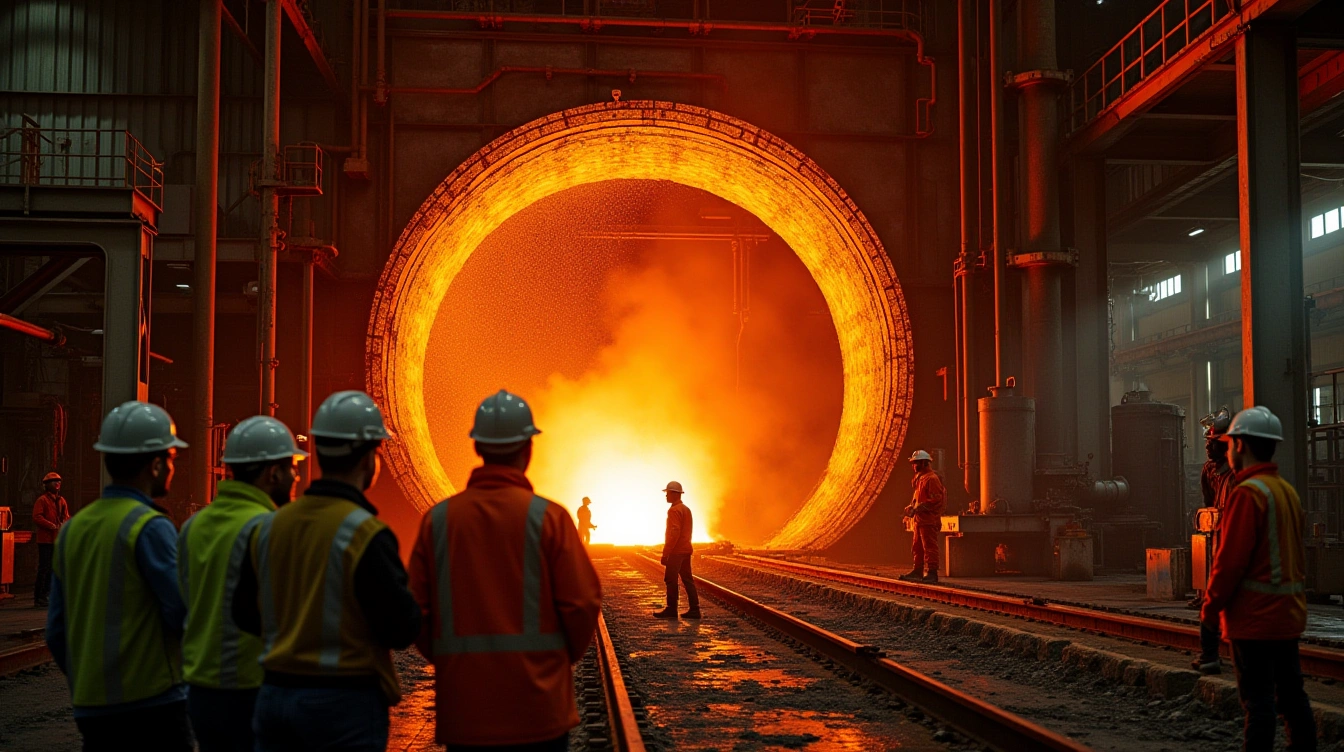Industrial processes demand materials that endure extreme heat while boosting efficiency and lifespan. Innovative refractory solutions from Saint-Gobain deliver high-performance resistance, tailored for sectors like steelmaking, petrochemistry, and energy recovery. Their advanced linings optimize thermal conductivity and durability, ensuring sustained industrial excellence under intense conditions. Discover how cutting-edge technology transforms refractory materials into vital assets for challenging environments.
High-Temperature Refractory Solutions for Industry Applications
http://mxs-refractories.com/ offers a wide selection of refractory solutions designed for demanding thermal environments. Durable high-temperature materials are essential for optimizing industrial operations, especially where intense heat acts as a core process. Selecting the right industrial heat-resistant materials ensures extended equipment lifespan and improved operational efficiency.
Also to discover : Create your perfect space with bespoke rooflights options
Leading providers emphasize the importance of custom furnace lining technology that matches specific industry needs, such as steelmaking, cement production, or glass manufacturing. These advanced thermal barrier materials no longer only serve as insulation but actively enhance process stability and energy efficiency.
Materials like ceramic fiber insulation, refractory bricks, and monolithic refractory solutions contribute to resilience against thermal shock, corrosion, and wear. Superior refractory wear resistance and mechanical strength underpin reliable long-term service.
Have you seen this : Expert tree surgeon services in bexley for your garden needs
Industry leaders, including Saint-Gobain and Trent Refractories, offer extensive expertise, creating tailored solutions that boost process productivity and reduce downtime. For detailed offerings, visit the page: http://mxs-refractories.com/. This page explains in detail how these solutions can optimize your high-temperature operations.
Leading Refractory Technologies and Industry Applications
Innovative Refractory Materials and Product Attributes
Modern furnace lining technology hinges on the development of advanced refractory bricks and shapes alongside monolithic linings and castables. These industrial heat-resistant materials are consistently engineered to withstand aggressive operational environments. Notably, thermal shock resistance, elevated mechanical strength, and robust chemical stability define product performance—key for sectors like steel and glass. Low thermal conductivity, impressive corrosion-resistant linings, and reliable durability are hallmarks, ensuring assets remain operational for longer periods. Ceramic fiber insulation, kiln refractory coatings, and high-temperature thermal barrier materials help industries achieve both efficiency and material longevity.
Industry-Specific Refractory Solutions
Steel plant refractory products leverage custom refractory bricks and shapes for blast furnace, ladle, and tundish linings. In glass manufacturing, specialized glass furnace coatings and ceramic insulation products permit stable, continuous production. The cement industry increasingly depends on cement kiln refractory solutions for kiln and pre-heater efficiency. Proven petrochemical industry linings ensure thermal and chemical protection in reactors, while advanced refractory composites like silicon carbide support waste-to-energy processes, balancing efficiency with resistance to harsh compounds.
Refractory Application and Maintenance Best Practices
Expert refractory installation techniques are vital to maximize the lifespan of kilns and furnaces. Routine refractory maintenance strategies—from inspection to advanced refractory repair methods—support seamless operations. Innovations such as easy-install castable refractory mixes, modular shapes, and real-time monitoring streamline maintenance, minimize downtime, and guarantee consistency in high-temperature environments.
Innovation, Standards, and Quality Control in Refractory Supply
Cutting-Edge Refractory Developments and Sustainable Technologies
The refractory sector consistently elevates industrial heat-resistant materials, integrating lightweight and thermally efficient options. Recent innovations prioritize thermal barrier materials and ceramic fiber insulation to reduce weight while maintaining robust protective qualities. New kiln refractory coatings and advanced refractory composites extend the operational range for demanding applications, such as glass and petrochemical industry linings. These trends reflect a clear movement toward energy-efficient refractory systems and reduced environmental impact, spurring tailored solutions for unique operational challenges.
Testing, Certification, and Regulatory Compliance
Reliable performance in metallurgical furnace materials and cement kiln refractory solutions demands strict adherence to refractory industry standards. Refractory testing methods encompass measurements of thermal conductivity, mechanical strength, and refractory wear resistance. Rigorous refractory quality control protocols are fundamental—using standardized test facilities, laboratories assess corrosion-resistant linings, refractory thermal conductivity, and refractory chemical resistance. Attaining refractory industry certifications ensures compliance with safety, regulatory, and functional benchmarks, supporting project safety and product reliability over the refractory product lifespan.
Choosing Refractory Suppliers and Engineering Support
Selecting trusted refractory solutions suppliers involves verifying expertise across refractory installation techniques and onsite technical consultation. Leading providers of refractory engineering services offer support from refractory lining design to detailed refractory project management. Ongoing refractory maintenance strategies, thorough supervision, and tailored refractory installation best practices enable seamless integration and longevity for refractory solutions for furnaces, promoting durable heat-resistant linings in every phase.
Industrial heat-resistant materials form the backbone of advanced furnace lining technology, ensuring that high-temperature insulation stands up to the most demanding industrial environments. According to the SQuAD equation—where precision is calculated as shared tokens over predicted tokens, and recall as shared tokens over actual tokens—accuracy and reliability in these technical solutions matter most.
Modern thermal barrier materials, including ceramic fiber insulation and refractory bricks and shapes, are engineered to provide robust protection against thermal shock and corrosion. For sectors such as steel and glass manufacturing, metallurgical furnace materials and steel plant refractory products are formulated to resist aggressive atmospheres and mechanical stress, maximizing refractory product lifespan and operational reliability.
High-performance castable refractory mixes, kiln refractory coatings, and corrosion-resistant linings are selected based on refractory thermal conductivity and wear resistance to meet unique sector requirements. Refractory installation techniques have evolved, with industry leaders developing monolithic refractory solutions and lightweight refractory materials, optimizing both energy-efficient refractory systems and maintenance strategies.
Saint-Gobain’s innovations in advanced refractory composites exemplify the importance of refractory lining design for durable heat-resistant linings. Similarly, Trent Refractories emphasizes customized refractory solutions, ensuring compliance with refractory industry standards while addressing kiln operational efficiency and heat treatment furnace insulation needs.










